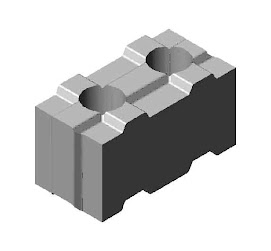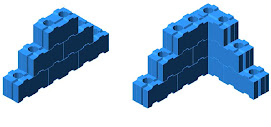HAYWARD, Calif.--(BUSINESS WIRE)--As part of the commemoration of the 140th anniversary of the 1868 Hayward earthquake -- the first great “San Francisco earthquake” and one of the most damaging earthquakes in the nation’s history -- members of the Structural Engineers Association of Northern California will present important information at the upcoming Hayward Earthquake Symposium. Their presentations on the advancements of engineering knowledge and technical guidelines in the past 140 years will collectively demonstrate that few lives will be lost and total building collapses will be rare as a result of future earthquakes “if we all work together and get prepared.”
Scientists warn that the Hayward Fault is a “Time Bomb” that releases huge amounts of damaging energy every 140 years. The next big earthquake on the Hayward Fault will affect the lives of the two million people who live, work, attend school and rely on the utilities and transportation systems in the vicinity.
“We may not be able prevent earthquakes from occurring, but catastrophe is not inevitable,” said Reinhard Ludke, a prominent Bay Area structural engineer and president of SEAONC, the premier association of practicing Structural Engineers in the Bay Area and one of the sponsoring groups of the Symposium.
“Earthquake preparation includes strengthening structures as well as public agencies, businesses, and families developing emergency response plans. The tragedy is that we have the knowledge to prevent major damage and protect public safety, but public officials and people often don’t take advantage of it. Structural Engineers want to be in a position to look back after any quake and be able to talk about what we protected and saved, and not recall what we lost.”
The Symposium takes place October 22-24, at the California State University, East Bay, Hayward Hill Campus. The media is invited to attend any of the sessions. The public is invited to attend an open forum on October 23, 7:00 p.m. to 8:30 p.m.
Here is a rundown of the presentations by Structural Engineers:
David Bonowitz is presenting a talk on how the advances in engineering standards can even better support community efforts to reduce earthquake risk. “In the past ten years, technical guidelines for earthquake evaluation and retrofit of buildings have proliferated,” Bonowitz said. “These guidelines are invaluable to engineers working on specific projects and now we want to make them even more useful to the people who decide whether and when to reduce earthquake risk in our built environment -- legislators, emergency planners, lenders, developers, and insurers. Guidelines and reference home retrofit drawings are widely available from local building officials who support residential building strengthening.”
Structural Engineers Joe Maffei and Karl Telleen will discuss advances in techniques to assess the potential earthquake damage to a structure, before an earthquake actually occurs. “We tested a set of new guidelines on several buildings near the Hayward Fault in Oakland, Berkeley and other locations,” reported Telleen, “and found that these new, probability-based methods allow engineers to better quantify expected structural performance and measure it against specific performance goals, such as allowing safe entry to a building after a quake.”
Structural Engineers Kit Miyamoto and Amir Gilani will present an overview and evaluation of the extensive Sichuan Earthquake damage and draw comparisons to SF Bay Area. For example, in past earthquakes in California, not unlike the earthquake in China, URM and nonductile concrete buildings have performed poorly and nonstructural and equipment damage has been widespread even in moderate earthquakes. “Fortunately for residents and businesses in the Bay Area,” said Miyamoto, “robust assessment techniques and conventional and innovative retrofit strategies are available to address such vulnerabilities.”
Engineer John Osteraas will talk on important assessment guidelines -- and the associated research and testing -- that can facilitate repair of residential wood-frame buildings. “While we expect that total building collapse will be rare in future quakes, overall building damage may be extensive,” Osteraas said. “These important assessment guidelines will help design professionals and contractors quickly and efficiently determine the damage and required building repairs of any structure.”
Engineers Alan Kropp and Wayne Magnusen review some innovative foundations for structures in the East Bay hillsides, areas that are currently experiencing slow downhill creep even in times of non-seismic conditions. “Our studies show that the performance of these mat foundations has been good in non-seismic times and will certainly be beneficial during an earthquake,” said Kropp.
Founded in 1930, The Structural Engineers Association of Northern California is committed to advancing the art and science of structural engineering.
...Read More...
JO & ASSOCIATES
Consultant - Contractor - Interior - Producer of "BATA INTERLOK"
contact us:
Email: antonjo@bdg.centrin.net.id
Phone/Fax: +62-22-5419698
HP: +62-22-76692727 or +62-8122387982
contact us:
Email: antonjo@bdg.centrin.net.id
Phone/Fax: +62-22-5419698
HP: +62-22-76692727 or +62-8122387982
3.11.08
Structural Engineers of Northern California Say Advancements Will Save Lives, Property and Infrastructure When Next Hayward Earthquake Occurs
Subscribe to:
Posts (Atom)
FOR SITE AT INDONESIA COUNTRY ONLY
DESIGN AND BUILD
for structural, architectural and interior.
Our email address: antonjo@bdg.centrin.net.id
for structural, architectural and interior.
Our email address: antonjo@bdg.centrin.net.id








